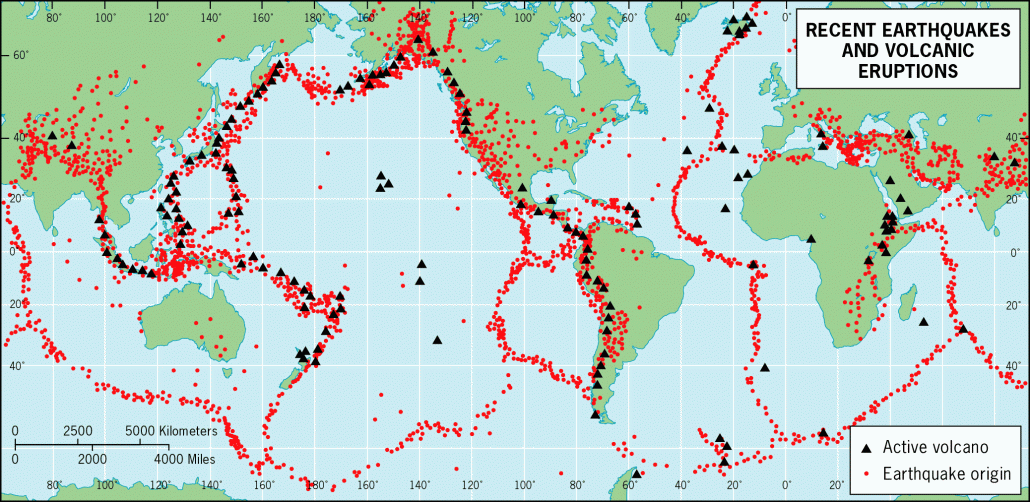What is the distribution of earthquakes and volcanoes?
Volcanoes and earthquakes do not occur just anywhere. The map below shows the distribution of recent earthquakes and volcanic eruptions. From the map, you will notice volcanoes and earthquakes mainly occur in narrow bands.
From the map, it is evident that earthquakes occur:
- Around the Pacific Ring of Fire – This region, forming a horseshoe shape around the Pacific Ocean, accounts for around 90% of the world’s earthquakes. Countries like Japan, Indonesia, and the west coast of the Americas lie along this zone.
- Along the Mid-Atlantic Ridge – This underwater mountain range in the Atlantic Ocean is also a site of significant seismic activity.
- In the Himalayan Region – The collision between the Indian Plate and the Eurasian Plate causes considerable earthquake activity.
- In other regions – Earthquakes also occur in continental rift zones like East Africa.
Volcanoes occur:
- Around the Pacific Ring of Fire – Much like earthquakes, a significant portion of the world’s active volcanoes is found in this region.
- Along the Mid-Atlantic Ridge – Volcanoes are also found along this ridge, particularly in Iceland.
- In the African Rift Valley – This region in East Africa is famous for its chain of volcanoes.
- In Italy and Greece – These Mediterranean countries are part of a complex tectonic boundary that hosts several active volcanoes, such as Mount Vesuvius and Mount Etna.
- At hotspots – Some volcanoes occur away from plate margins due to hotspots. A hotspot is a stationary area of intense heat in the mantle that creates a plume of molten rock, which can break through the Earth’s crust to form a volcano. As tectonic plates move over these hotspots, a series of volcanoes can be formed, like the Hawaiian Islands.
In the next section, you will explore why volcanoes and earthquakes happen, which will help you understand the global pattern of volcanoes and earthquakes.
Summary
Flashcards
Check Your Knowledge
Coming soon

